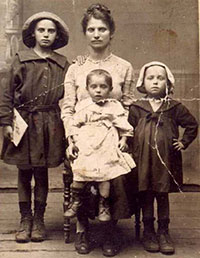American View
News + Politics
Felshtin Descendants Restore a Lost Heritage

In February 1919, Ukrainian soldiers murdered 600 Jews in the shtetl of Felshtin, executing about one-third of its Jewish population. Nearly all those remaining were killed in a 1941 Nazi massacre.
Now, the descendants of Felshtin’s Jewish community are determined “not to allow what happened to fall into the dustbin of history,” said Alan Bernstein, a New Yorker whose grandparents emigrated from the shtetl in 1912. This April, Bernstein will be among 250 descendants at the Felshtin Society’s pogrom centennial memorial conference to be held at the Center for Jewish History in New York City.
A century ago, the few survivors of the pogrom were resettled by the First Felshteener Podolier Benevolent Society, which landsmen had established in New York City in 1905. Like most immigrant organizations, the aid group disbanded over time—only to be reborn in the 1990s as the Felshtin Society, with a new mission of restoring lost heritage.
Shtetls represented “a rich history and culture that formed the bedrock of Jewish community life,” explained Bernstein. A majority of American Jews with Ashkenazi roots claim ancestry from the 19th-century Russian Pale of Settlement, where Jews were then permitted to live. Felshtin is today known as Hvardiyske, located 185 miles southwest of Kiev.

In 2009, society members traveled to their ancestral hometown to dedicate a memorial in the cemetery they restored there. In May, they are planning to return to meet local organizers of a vigil marking the centennial of the 1919 pogrom.
Engaging young Jews in a history that inspires horror and even shame remains a challenge, Bernstein noted. “We’re talking about rape, about men who were unable to defend their families and who were slaughtered in front of their eyes,” he said. Yet amid current refugee crises, Bernstein added, the Felshtiners feel strongly about the importance of historical awareness. “There are life lessons to be learned for humanity.”










 Facebook
Facebook Instagram
Instagram Twitter
Twitter
Elissa Leifer says
Just as a note of clarification:
This photo above of the mother with three children was after the pogroms, and the child on the left is my mom. I supplied this photo to Felshtin.org
http://felshtin.org/the-little-mother/